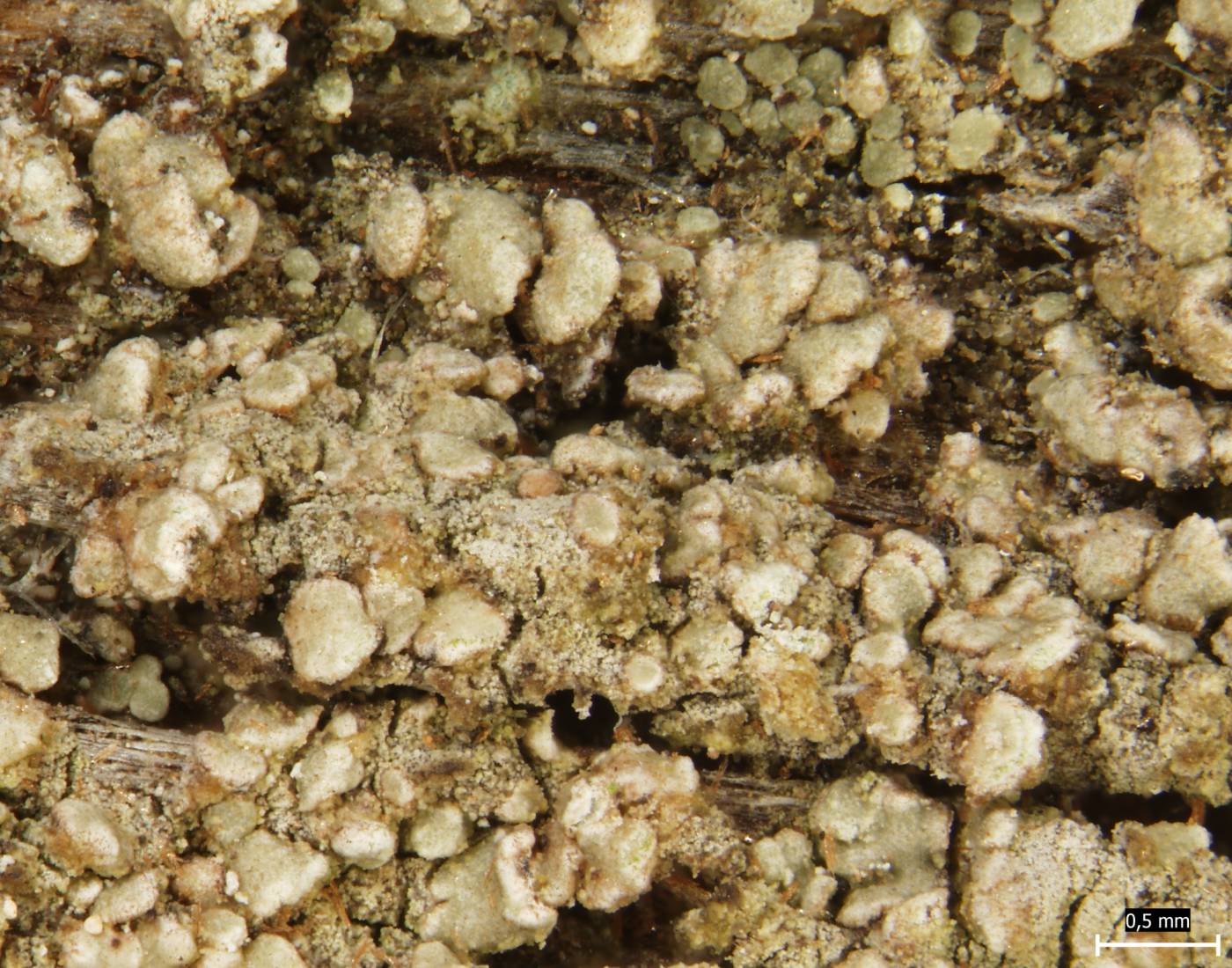This species is characterised by its mostly brown squamules, sorediate on their margins and underside. It produces fumarprotocetraric acid (Pd+ red) and unknown substances „anthracophila-unknowns“ (UV+ white). The common Hypocenomyce scalaris is a similar lichen, but contains gyrophoric acid (C+ red).
Carbonicola anthracophila grows mostly on burnt wood. Its European range covers mainly boreal coniferous forests, but it has been found in pine forests in the Mediterranean as well (e.g. Nimis 2016). The species is very rare in central Europe, known from only a few localities. Two recent records are known from the Czech Republic (screes in the Šumava Mts and Brdy Hills) from the wood of pine snags, which did not show signs of charring. However, at the Šumava site near Plešný jezero, some neighbouring snags showed signs of charring (Malíček et al. 2018).
Literature: Nimis P. L. (2016): The Lichens of Italy. A Second Annotated Catalogue. – EUT – Edizioni Università di Trieste, Trieste. Malíček J., Palice Z. & Vondrák J. (2018): Additions and corrections to the lichen biota of the Czech Republic. – Herzogia 31: 453–475.
taxonomic classification:Ascomycota → Lecanoromycetes → Lecanorales → Carbonicolaceae → Carbonicola
most frequented synonyms:Hypocenomyce anthracophilaRed List (Malíček 2023):C1 – critically endangered
Occurrence in the Czech Republic
All records: 2, confirmed 2. One click on a selected square displays particular record(s), including their source(s).
